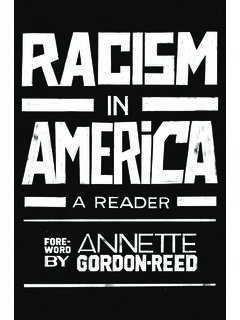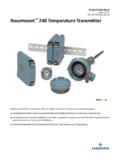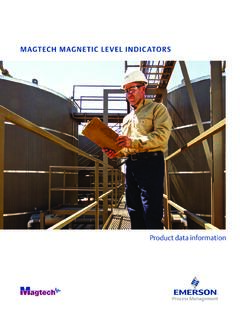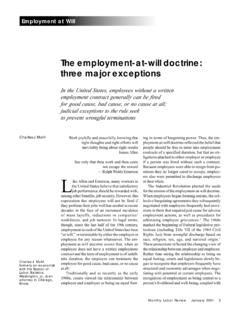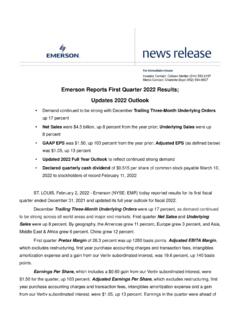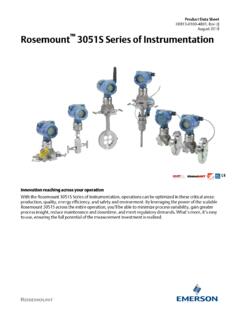Transcription of Guidelines - Harvard University Press
1 Guidelines Notes February 2021. A. General Instructions 1. Create endnotes. Do not use footnotes; do not include a bibliography or refer- ence list. (If you are using author-date citations, see those instructions.). 2. Notes should constitute no more than 15 20% of the total word count of your manuscript. 3. Avoid excessive annotation, elaborate discursive notes, and long quotations. Do not put tables or figures (illustrations, lists, charts, maps, or graphs) in endnotes. 4. Create endnotes using the Word endnote function. Make sure note callouts are linked to the endnotes in the manuscript file (ask your editor for assistance if you are unsure how to do this).
2 5. Put information about prior publication of a chapter or portion of text (including permission language stipulated by the original publisher) into the acknowledg- ments or preface, not in a numbered note. 6. For notes to a table, use a, b, c and place them at the bottom of the table. See Art Submission Guidelines . 7. For annotation questions not covered by these instructions, consult the latest edition of the Chicago Manual of Style (available at http://www. chicagomanual ) or discuss with your editor. B. Placing Callouts (endnote numbers) in Text 1.
3 An endnote may contain several sources, including multiple references for a single sentence or paragraph. 2. Place endnote numbers at the ends of sentences, not in the middle of a sentence. Never use multiple note numbers in a single sentence. 3. Do not attach a note number to a chapter title, subheading, figure, or epigraph. Editorial Department 79 Garden Street, Cambridge, Massachusetts Tel Fax 1. Guidelines C. Reference Style: Special Issues 1. Full and short citations; ibid.. Use a full citation the first time a work is referred to in each chapter.
4 Use the short title for subsequent citations within the same chapter. For example: (first citation): Rhona S. Weinstein, Reaching Higher: The Power of Expectations in Schooling (Cambridge, MA: Harvard University Press , 2002), 82. (subsequent citations): Weinstein, Reaching Higher, 10 12. Do not use ibid. Use the short title for repeated references to a work within a chap- ter. Do not use op. cit. or loc. cit. ; use the short title instead. 2. Electronic sources If your reference includes an electronic link, or URL, provide the full citation au- thor, title, date of publication, name of website before the URL.
5 A URL by itself is not a complete reference. Electronic links are unnecessary for citations of print sources such as well-known periodicals ( , New York Times, Harper's). If you provide DOIs for some journal articles, provide DOIs for all. For sources that are available only electronically, provide the full citation (author, title, date, etc.) and include the link. The URL should point directly to the piece you are citing, not to a more general location such as an organization's home page or a list of contents. D. Formatting Endnotes 1.
6 Number notes starting with 1 at the beginning of each chapter. 2. Do not cross-reference other notes. (Examples of what not to do: see note 3, above ; see note 10 in Chapter 6 ; supra, n. 3 ; infra, n. 10. ). 3. Subparts of works: Do not capitalize vol., sec., fol., etc. Use Arabic numbers, not Roman numerals, for volume numbers, chapter numbers, etc. Editorial Department 79 Garden Street, Cambridge, Massachusetts Tel Fax 2. Guidelines 5. Page spans: Use full spans for page numbers (192 193, not 192 93 or 192 3). Pro- vide page spans; do not use ff.
7 Or passim.. 6. Abbreviations: Use compare or see also instead of cf.. Use postal abbreviations for states ( MA, not Mass. ). Use ed. (for edited by or editor depending on its position), trans.. (for translated by or translator depending on its position), rev. (for revised ). 7. Capitalize article and book titles using headline capitalization style. 8. Italicize book titles and journal names; use quotation marks for article titles, titles of book chapters, titles of conference presentations, and dissertations. E. List of Abbreviations for Note Sources If you cite some sources repeatedly and the same sources appear in several chapters, you may create an abbreviation list for notes (check with your editor before you do this).
8 If a source appears in only a couple of chapters, provide the full reference in each chapter and do not include a list of abbreviations. Generally, an abbreviation list is used for collected works or archival sources. The list will appear at the beginning of the endnotes section. Prepare a two-column list of abbreviations for sources cited repeatedly, alphabet- ized by the abbreviation. Example: Collected Works of Abraham Lincoln, ed. Roy P. Basler, 8 vols. New Bruns- CWAL . wick, NJ: Rutgers University Press , 1953. HH Henry E.
9 Huntington Library, San Marino, CA. LSU Special Collections, Hill Memorial Library, Louisiana State University , Baton Rouge, LA. Editorial Department 79 Garden Street, Cambridge, Massachusetts Tel Fax 3. Guidelines Sample Notes Books Eric Foner, Tom Paine and Revolutionary America (New York: Oxford University Press , 1976), 44 48. Foner, Tom Paine, 53. Ralph Waldo emerson , The Early Lectures of Ralph Waldo emerson , vol. 1: 1833 . 1836, ed. Stephen E. Whicher and Robert E. Spiller (Cambridge, MA: Harvard Uni- versity Press , 1959), 102 103.
10 emerson , Early Lectures, 1:105. Martin Richards and Paul Light, eds., Children of Social Worlds (Cambridge, MA: Harvard University Press , 1986), 42. Richards and Light, Children of Social Worlds, 68. Journal Articles, Dissertations, and Newspapers Walter Johnson, Inconsistency, Contradiction, and Complete Confusion: The Ev- eryday Life of the Law of Southern Slavery, Law and Social Inquiry 22, no. 3 (1997): 405 433. Johnson, Inconsistency, 433. Robert J. Cain, Telegraph Cables in the British Empire, 1850 1900 (PhD diss., Duke University , 1970), 220 221.
